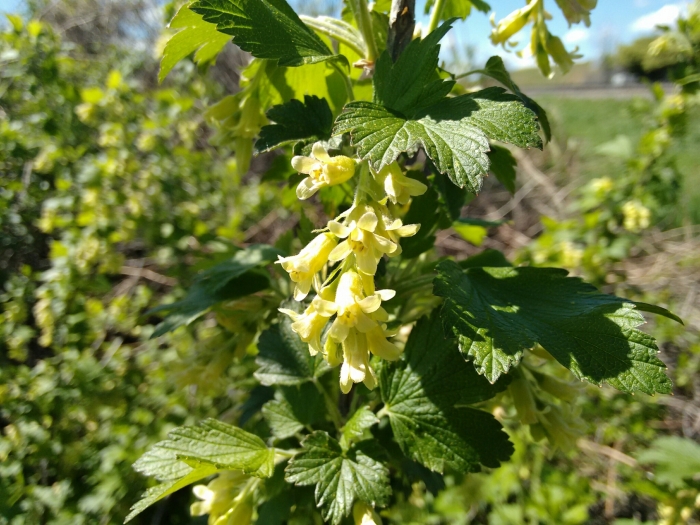American Black Currant
(Ribes americanum)
American Black Currant (Ribes americanum)
/
/

Rafael Medina
CC BY 4.0













































Estimated Native Range
Summary
American Black Currant is valued for its wildlife-friendly attributes, as the berries provide food for birds and other animals. It is used in naturalistic plantings, as a border shrub, and for restoration projects. This shrub is relatively low-maintenance, adaptable to a range of soil types, and can thrive in full sun to part shade conditions. It requires medium amounts of water and can tolerate various drainage levels. While not commonly afflicted by serious diseases, it can be susceptible to white pine blister rust, which limits its use in areas where white pines are present. Gardeners should be aware of local regulations as planting may be restricted due to the rust issue.CC BY-SA 4.0
Plant Description
- Plant Type: Shrub
- Height: 3-5 feet
- Width: 3-5 feet
- Growth Rate: Moderate
- Flower Color: Yellow, Green
- Flowering Season: Spring
- Leaf Retention: Deciduous
Growth Requirements
- Sun: Full Sun, Part Shade
- Water: Medium
- Drainage: Fast, Medium, Slow
Common Uses
Bee Garden, Bird Garden, Butterfly Garden, Deer Resistant, Edible*Disclaimer: Easyscape's listed plant edibility is for informational use. Always verify the safety and proper identification of any plant before consumption., Hummingbird Garden, Rabbit Resistant, Street Planting
Natural Habitat
Moist woodland areas, forest edges, and stream banks
Other Names
Common Names: Blank Currant, Wild Black Currant, Kanadische Johannisbeere, Groseillier D’Amérique, Gadellier Américain, Gadellier D’Amérique, Gadellier De La Floride, Parktistron
Scientific Names: , Ribes americanum, Ribes missouriense, Ribes pensylvanicum, Ribes campanulatum, Ribes recurvatum, Ribes americanum f. pauciglandulosum, Ribes floridum, Coreosma americana, Coreosma americana var. mesochora
GBIF Accepted Name: Ribes americanum Mill.